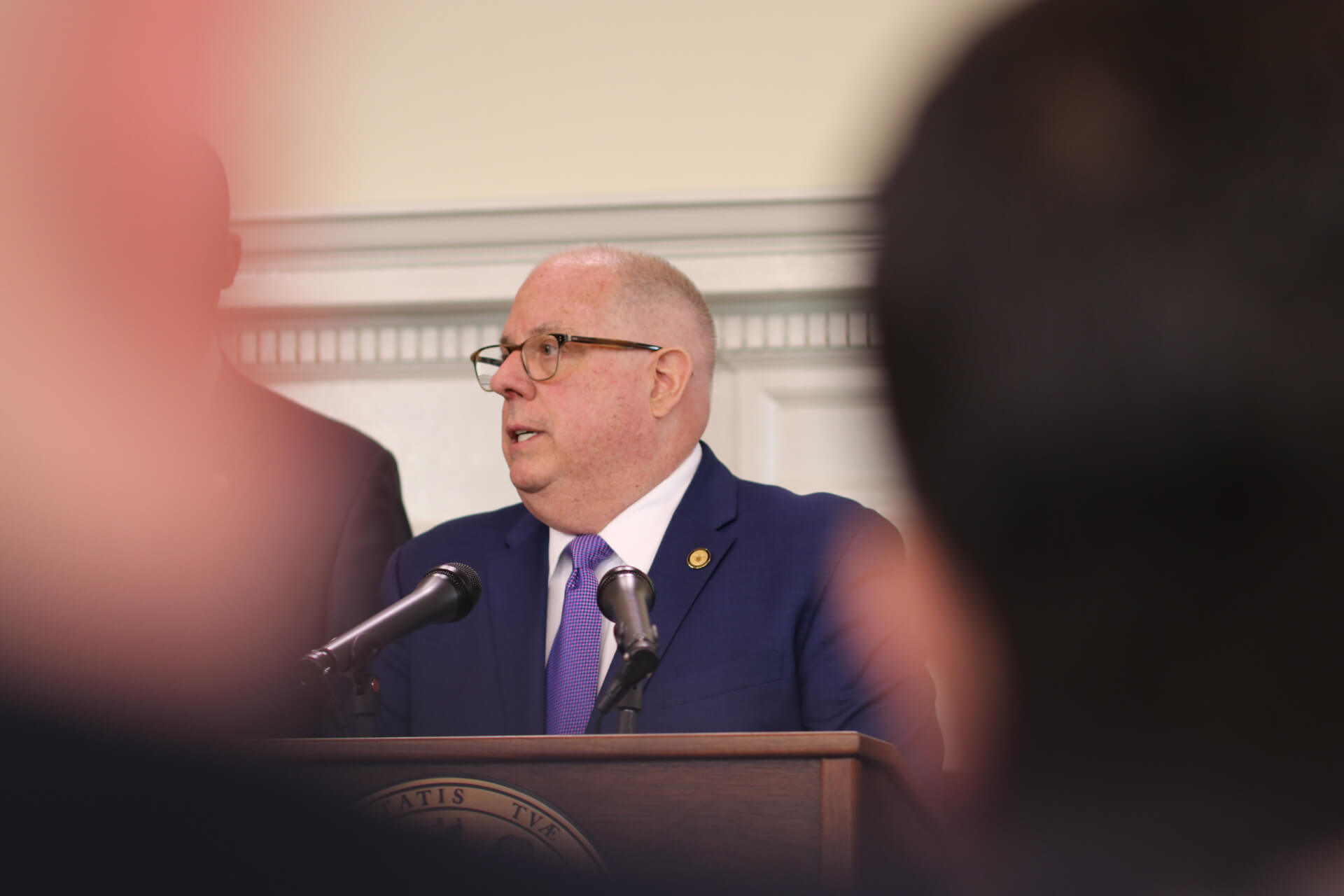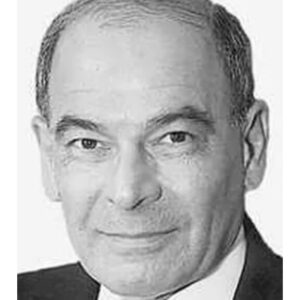
Gov. Larry Hogan is a victim of his own popularity. He’s unable to translate his poll-tested high standing with the voting public into bending the heavily Democratic General Assembly his way.
To try and resolve the dichotomy between personal likeability and spaces left blank on his wish list, Hogan is outsourcing the paradox of arguably the most popular governor in America to fundraisers.
They, in turn, are expected to fill in the communications gap between sovereign and subjects by underwriting a media blitz to harness support for Hogan’s positions, especially against the docketed education reforms embraced by Democrats – much the way President Trump energizes his base with Tweets.
What separates the two is not the blind polarization that cleaves Washington, D.C., and the red-blue nation, but the differences are more of a road-map of where to direct the diverse state and, mostly, how to foot the bill for the Democrats’ view of the future against a governor who resists and rejects taxes.
Hogan has laid down his marker for this session as a symbolic but catch-all “accountability” label against the majority Democrats’ determination to ram through the Kirwan Commission education plan at a cost of untold billions. Both of the Assembly’s new presiding officers served on the commission that developed the program and the price tag. Hogan has made the program’s high cost and its funding sources his crusading issue.
Often the word “mandate” is tossed around as if it’s a franchise tag. In the State House, there’s only one mandate that matters – 24 votes in the Senate, and 71 votes in the House. With that commanding math in hand, anything within reason can be accomplished. Without it, nothing is sacred.

Frank A. DeFilippo
To add to the delicious complexity of the 2020 – the year of clarity and vision, 20/20, get it? – session is that both the House and the Senate are under the gavels of new leaders, both from the Baltimore area – Sen. Bill Ferguson, of Baltimore City, and Del. Adrienne Jones, of Baltimore County.
Their ascendency to the top gives the Assembly an urban tone and a liberal tilt, especially on the issue of Kirwan, which has their avowed support as well as their promise to massage the proposal into a form acceptable to Baltimore City along with Prince George’s County.
The two jurisdictions would benefit the most under the proposal’s poverty formula, but partially at their own expense. Each would have to pony up more than $300 million in local funds, a punishing burden on impecunious Baltimore and a difficult choice for self-imposed tax-capped Prince George’s. They’re pleading for a fix.
Both new leaders are untested at the rostrum and a show of vote-counting skills at the tote board, although Jones served an apprenticeship as speaker pro tem and filled in for her predecessor and mentor, the revered Speaker Michael Busch, of Anne Arundel County, who died a day before the end of the 2019 session.
But Hogan’s first test, and by law the session’s first order of legislating business, will be the Assembly’s action on eight vetoes, which will likely happen later this month. And, as always, there are veto-proof majorities in both the House and the Senate, leaving Hogan no wiggle room except the whim and will of the legislature.
Polls are a form of autobiography. They say what a governor does and how well he does it. Hogan’s job approval rating in the latest Gonzales Research poll is high enough to punch a hole in the ozone layer, an astonishing 75 percent, clinging to where it has hung for an equally remarkable number of years. Hogan’s high standing with the voters brackets all demographic groups.
Even more impressive in the wonderful world of polling is that his disapproval rating is a barrel-bottom low of 17 percent, and this after five years in office. (By comparison, Trump’s approval rating in Maryland is 37 percent, while his disapproval score is 61 percent.)
Hogan has proven so far to be a nimble politician. So conventional thinking would be correct that with polls in hand and the public on his side, Hogan could use his popularity, the awesome authority of the governor’s office and his personal powers of persuasion to have matters pretty much to his choosing.
And there are a couple of other handy tools at his disposal, too. With newly minted presiding officers in both chambers, Hogan has room for maneuvering and mischief as they approach the tests of their vote-counting and cat-herding skills.
Even more persuasive is that Hogan will be drawing the legislative reapportionment maps in two years, his final year in office. That is arrival time for rewards and punishments, but in the meantime offers occasions for hints and threats.
Niccolò Machiavelli, the 15th Century Italian courtier and the world’s foremost political consultant, counseled his Prince that: “It is better to be feared than loved, if you cannot be both.”
The ‘A’ word
There’s a fine point where Hogan might be right and the legislature wrong, however. Hogan has hung his Borsellino on the encapsulating word accountability – crime, education, taxes, corruption, and whatever else resonates with the public under that foreboding heading.
One thing’s for sure: In the public’s mind, according to the Gonzales poll, crime is a much higher priority than education, causing more than double the heartburn among voters, despite what the Kirwan Commission, Democrats and the education lobby might say.
Among the poll’s findings, 31 percent said crime is their highest concern while only 16 percent said education was their priority. The remainder were scattered among such issues as taxes and corruption.
The past two years have been open season on elected officials in Maryland, with more than a half dozen outfitted in orange jumpsuits.
So on the subject of accountability, Hogan was hoisted by his own petard (a small bomb, in case you’re wondering). Hogan was questioned about his outside real estate business based on reporting by the Washington Monthly, and the House has suggested that it will look into the matter.
The suggestion was: Hogan can position state transportation projects in such a way that they benefit the real estate holdings of his private company which is run by his brother and not held in a blind trust.
Object lessons: W. Dale Hess, of Harford County, as House majority leader in the 1960s, quietly amended a five-year state roads program so that he could get advance sneak-peeks at where highway interchanges would be located so that he could buy up adjacent land and build prime-site motels and restaurants. Spiro T. Agnew, as governor (1967-69), maneuvered state highway projects near the proposed second Bay Bridge site so that land owned by his friends would increase in value. Easier done than said.
Beyond the General Assembly, the most formidable line of defense of Kirwan that Hogan will take on is the education lobby itself. Durable, unyielding and sprawling in size, it will be unmoved by either the governor or his media storm – if it develops.
There are nearly 900,000 students enrolled in 1,428 Maryland public schools that are taught by about 58,000 teachers. Superimpose those figures onto the administrators, school boards, PTA’s, teachers’ unions and associations, volunteers and all the families involved, and all of those constituencies constitute a monumental and immovable bloc of supporters and mostly allies of Democrats on this issue and more.
People in public office are pretty much like the people who elect them. Hogan’s big scare about the cost of Kirwan hasn’t changed many minds in or out of the General Assembly.




 Creative Commons Attribution
Creative Commons Attribution